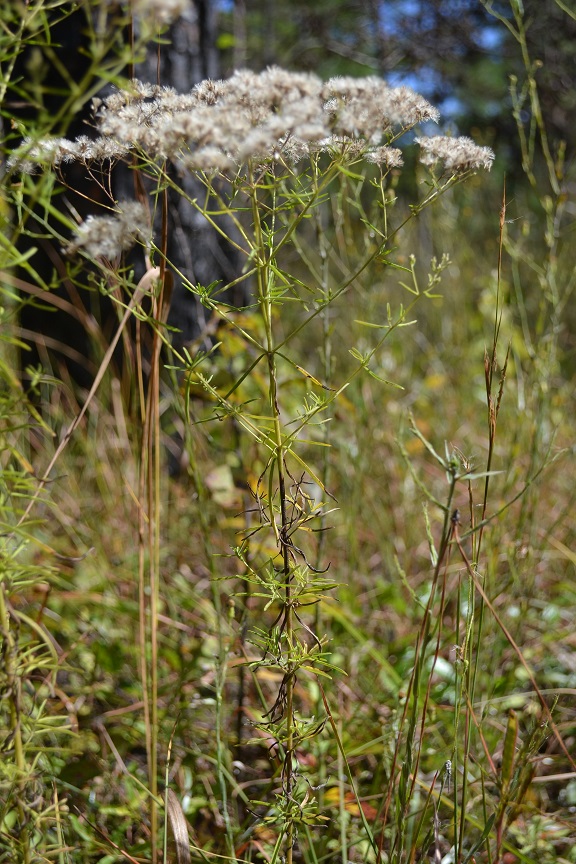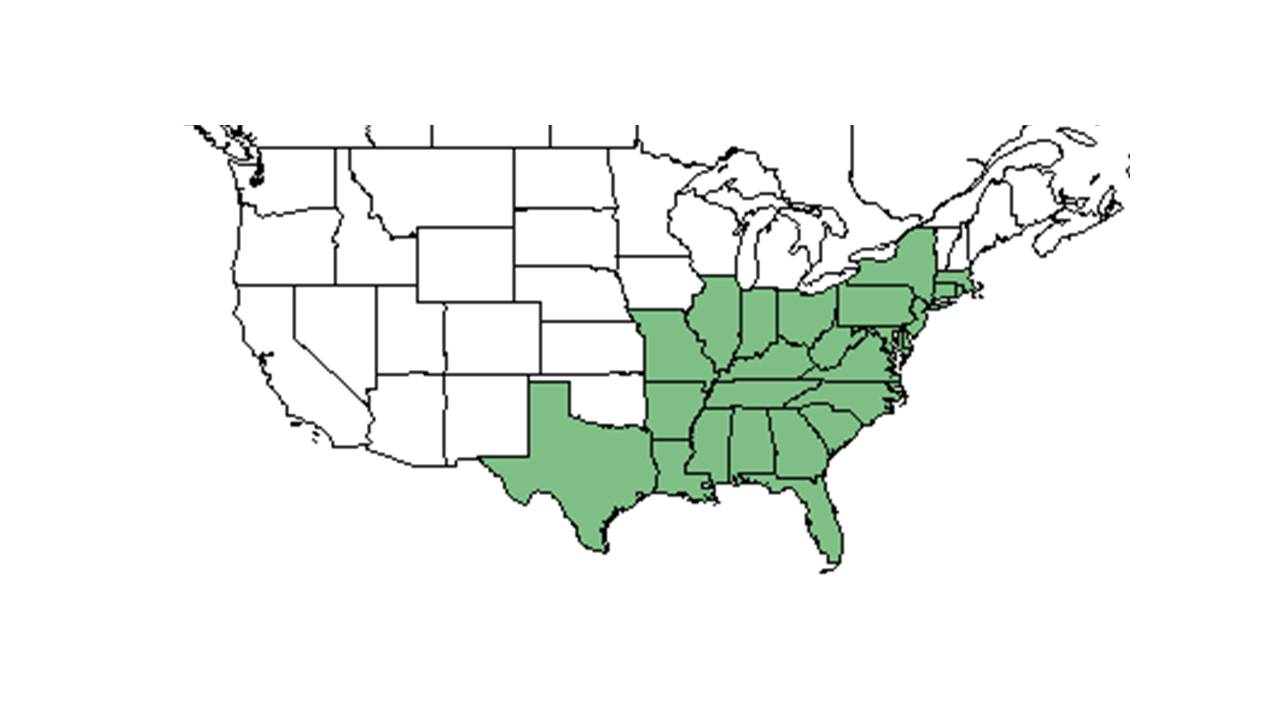Difference between revisions of "Eupatorium hyssopifolium"
Laurenloria (talk | contribs) (→Seed dispersal) |
(→Seed dispersal) |
||
| Line 31: | Line 31: | ||
It has been observed flowering from July to November.<ref name=fsu/> | It has been observed flowering from July to November.<ref name=fsu/> | ||
===Seed dispersal=== | ===Seed dispersal=== | ||
| − | This species | + | This species is thought to be dispersed by wind. <ref>Kirkman, L. Katherine. Unpublished database of seed dispersal mode of plants found in Coastal Plain longleaf pine-grasslands of the Jones Ecological Research Center, Georgia.</ref> |
<!--===Seed bank and germination===--> | <!--===Seed bank and germination===--> | ||
Revision as of 16:28, 28 August 2018
| Eupatorium hyssopifolium | |
|---|---|

| |
| Photo taken by Kevin Robertson | |
| Scientific classification | |
| Kingdom: | Plantae |
| Division: | Magnoliophyta - Flowering plants |
| Class: | Magnoliopsida – Dicotyledons |
| Order: | Asterales |
| Family: | Asteraceae ⁄ Compositae |
| Genus: | Eupatorium |
| Species: | E. hyssopifolium |
| Binomial name | |
| Eupatorium hyssopifolium L. | |

| |
| Natural range of Eupatorium hyssopifolium from USDA NRCS Plants Database. | |
Common name: Hyssopleaf thoroughwort
Contents
Taxonomic notes
Synonyms: Eupatorium hyssopifolium var. hyssopifolium; E. hyssopifolium var. calcaratum Fernald & Schubert; E. lecheifolium Greene
Description
A description of Eupatorium hyssopifolium is provided in The Flora of North America.
Distribution
Ecology
Habitat
It is found in Longleaf pine-Turkey oak sand ridges, Longleaf pine sandhills and flatwoods, pine-palmetto flatwoods, Turkey oak scrubs, Longleaf pine-wiregrass savannas, and in open meadows. [1]It is also found in human disturbed areas such as old fields, roadsides and areas that have been clear cut and bulldozed.[1] It requires high levels of light.[1] It is associated with sandy loam, sand-clay loam, and sandy soil types.[1] Associated species include Andropogon.[1]
Phenology
It has been observed flowering from July to November.[1]
Seed dispersal
This species is thought to be dispersed by wind. [2]
Fire ecology
It increased in frequency after 12 prescribed burns over an 18 year period.[3] It occurs in pinelands and savannas that are burned annually.[1]
Conservation and management
Cultivation and restoration
Photo Gallery
References and notes
- ↑ 1.0 1.1 1.2 1.3 1.4 1.5 1.6 Florida State University Robert K. Godfrey Herbarium database. URL: http://herbarium.bio.fsu.edu. Last accessed: June 2014. Collectors: R. Lazor, Loran C. Anderson, J. P. Gillespie, R.K. Godfrey, Gary R. Knight, R. Kral, Angus Gholson, A. F. Clewell, N. C. Henderson, Victoria I. Sullivan, Carol Havlik, Richard S. Mitchell, R. Komarek, R. A. Norris, and R. F. Doren. States and Counties: Florida: Escambia, Gadsden, Jackson, Leon, Madison, Taylor, and Wakulla. Georgia: Grady and Thomas.
- ↑ Kirkman, L. Katherine. Unpublished database of seed dispersal mode of plants found in Coastal Plain longleaf pine-grasslands of the Jones Ecological Research Center, Georgia.
- ↑ Niering, W. A. and G. D. Dreyer (1989). "Effects of prescribed burning on Andropogon scoparius in postagricultural grasslands in Connecticut." American Midland Naturalist 122: 88-102.